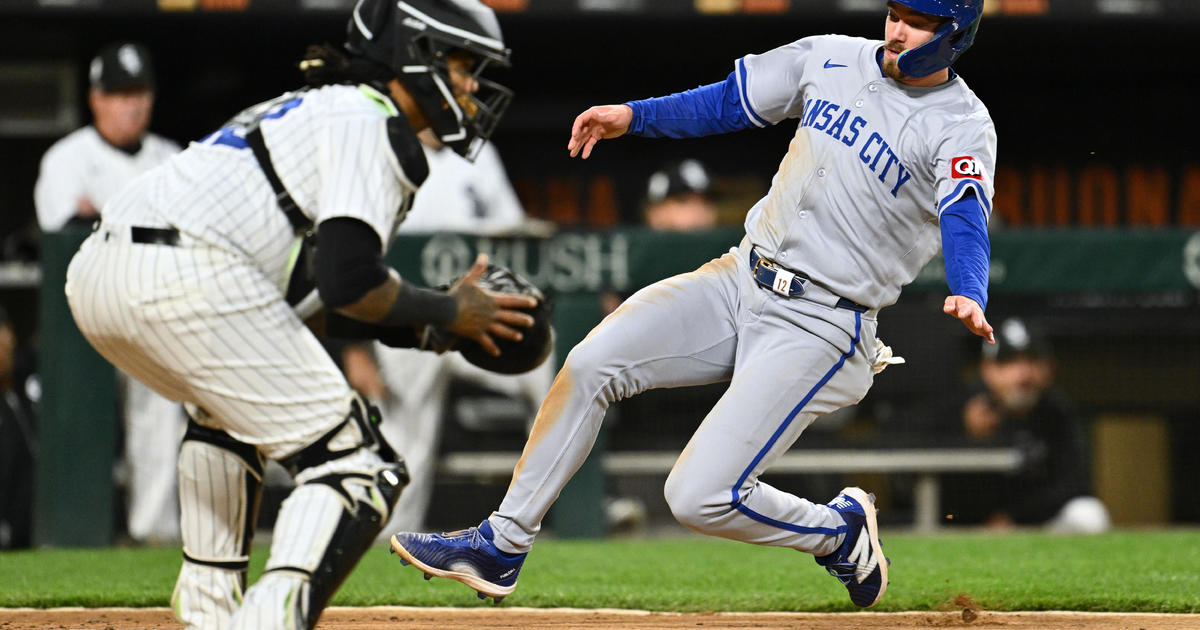Lindholm: A Quick Path To White Sox Respectability
By Scott Lindholm-
(CBS) The 2014 White Sox are a riddle wrapped in a mystery inside of an enigma. They were decent in 2010, regressed below .500 in 2011, contended in 2012 until the end of the season and completely fell apart in 2013. In the past three seasons they've been consistent in their lineup with Paul Konerko, Adam Dunn, Gordon Beckham, Alexei Ramirez and Dayan Viciedo and pitching anchored by Chris Sale and whoever wasn't injured. When a team yo-yos like the Sox have recently, it's difficult to know what to expect.
In my old blog I created a Mistake Index where I put a number of measures together in one place. I had a simple idea -- can team success be predicted with any confidence by viewing the number of mistakes they make? It's not as off-the-wall as it may seem. Baseball mistakes in my definition are almost anything that gives away a base at no cost to the opponent. For example, an error that allows a baserunner to reach or advance a base or being thrown out on the basepaths eliminates a scoring opportunity and so on.
This table shows values I'll tentatively label "mistakes" -- though a better term might be "opportunities lost." It shows data from 2011 through 2013 to give a glimpse as to some of the woes the Sox faced in 2013 and how they might be correctable sooner than commonly believed. In all cases the Sox's rank is in parentheses, with 1 being the best in baseball at achieving or preventing something, 30 worst.
| Measure | 2011 | 2012 | 2013 |
|---|---|---|---|
| Errors | 79 (3rd) | 70 (1st) | 121 (29th) |
| Passed Balls | 10 (20th) | 9 (9th) | 21 (29th) |
| Wild Pitches | 55 (20th | 66 (27th) | 62 (21st) |
| Stolen Bases | 81 (26th) | 109 (13th) | 105 (12th) |
| Caught Stealing | 53 (27th) | 43 (21st) | 42 (27th) |
| Pickoff | 15 (5th) | 11 (1st) | 19 (25th) |
| Walks | 473 (20th) | 460 (23rd) | 411 (29th) |
| Strikeouts | 984 (3rd) | 1193 (18th) | 1207 (16th) |
| Total Bases | 2133 (21st) | 2328 (8th) | 2104 (23rd) |
| GDP | 125 (23rd) | 112 (12th) | 124 (16th) |
| Out on Bases | 53 (18th) | 54 (15th) | 53 (14th) |
| Bases Taken | 158 (2nd) | 127 (21st) | 163 (5th) |
| Extra Base Taken | 36.7% (27th) | 39.3% (21st) | 36.1% (27th) |
Data adapted from Baseball-Reference.com
The Sox committed 79 errors in 2011, 70 in 2012 and 121 in 2013, second-worst in baseball behind only the Astros and completely unexpected as the defense was essentially unchanged from 2012. Ramirez almost doubled the number of errors he made in 2012 (12 to 22), Gordon Beckham the same (seven to 12) and four third basemen led by Conor Gillaspie committed 23 errors to 14 in 2012. Even first base saw a dramatic increase in errors, from three in 2012 to 14 in 2013.
Obviously, there's a very direct connection between errors and unearned runs for; in 2013, around 54 percent of errors turned into unearned runs, whereas for the Sox it was closer to 66 percent. They made more errors and saw those errors become unearned runs at a higher rate, a very bad combination. If the Sox can return to 2012 form, they could potentially reduce around 30 runs allowed. If a team can regress from fewest errors to second-most in only one season, they can certainly improve just as quickly.
Passed balls and wild pitches are a function of catching defense, and there's little reason to believe the platoon of Tyler Flowers and Josh Phegley will improve significantly. The stolen bases, caught stealing and pickoffs aren't mistakes as much as measures of the effectiveness of the running game. Teams that run more will be thrown out on the bases more, so it's more important to see how effective they are on the basepaths.
Offensively, in 2013 the Sox had 2,131 opportunities to steal a base — they stole 105, were caught stealing 42 times and picked off 19 times, meaning the wheels went in motion 7.8 percent of the time, sixth in baseball. They were definitely aggressive on the basepaths. My definition of success is stolen bases/(stolen bases + caught stealing + pickoffs), and the Sox were in the bottom half in success by this measure. There's nothing wrong with stealing bases, but every pickoff and caught stealing is another opportunity lost to score a run.
As recently as 2010 I was in the "strikeouts are no big deal" camp, but pitching is on the rise and offense is declining since around 2007. In just that brief time span, average runs scored per game has dropped from 4.8 to 4.2, around a 14 percent decrease. In an era of decreased offense, every out counts, and giving one away with a strikeout is something to be avoided. On the flip side, walks are to be encouraged, but the Sox have dramatically increased their strikeouts at the plate (22.6 percent) and decreased their walks (13.1 percent) since 2011, a tandem development that should be very disconcerting.
The Sox were 23rd in total bases in 2013, and even worse, 26th in baserunners (not shown). How often teams get on base in any manner, be it hit, error, walks, hit by pitch or whatever goes very far in determining team success. With a few exceptions, there is little variability in the percent of baserunners who score from team to team, so the more baserunners, the more that score. The number of baserunners is decreased by too many strikeouts and not enough walks.
The Sox are in the middle of the pack in double plays grounded into despite having the eighth-fewest GDP opportunities -- as such, they actually hit into more double plays than expected. Outs on base are the number of times a baserunner was thrown out trying to advance on a batted ball, and while it seemed like Sox players were being thrown out in every game last year, it's been fairly steady over the past three years. Bases taken are the number of times a player was able to advance on fly balls, passed balls, wild pitches, etc. Extra bases taken is how often Sox runners advanced more than one base on a single or more than two bases on a double, and the Sox were near the bottom in this.
As I amass play-by-play data, I also tabulate these numbers for opponents, allowing me to see how many "mistakes" a team makes and how many opponents make, because it's just as important to capitalize on an opponent's mistakes. If you click on the Mistake Index at the beginning of this post, it's hard to miss the Sox making 183 more mistakes than their opponents, the worst in baseball. It also provides a ray of hope for 2014 because these issues can be improved. Hitters can become more selective at the plate, fielding can improve and if all facets improve as quickly as they deteriorated in 2013, the Sox could bounce back faster than expected.
In the end, that's why the Sox are a mystery, because it's still hard to definitively state which Sox team is the real Sox, the 2013 or 2012 team. In 2013 they were a free-swinging, relatively slow team with porous defense, but they don't need to stay that way. Young players like Adam Eaton, Matt Davidson and Avisail Garcia could provide immediate improvement and the veterans could rebound, particularly on defense.
I don't think it's likely, but I can't rule out the possibility the Sox can improve dramatically in 2014. We'll find out soon enough.
Follow Scott on Twitter @ScottLindholm.



